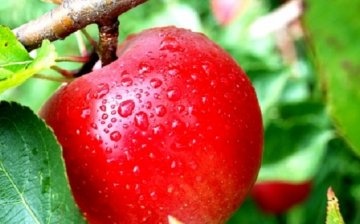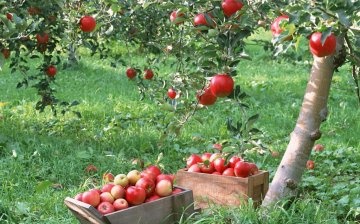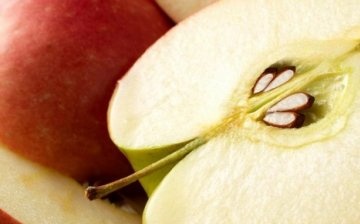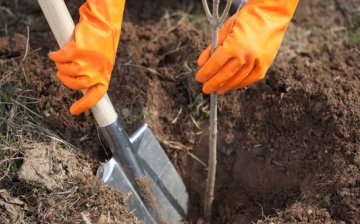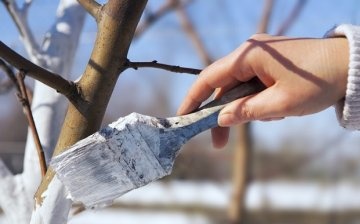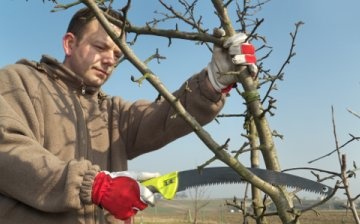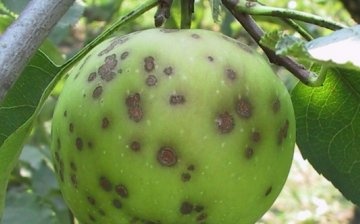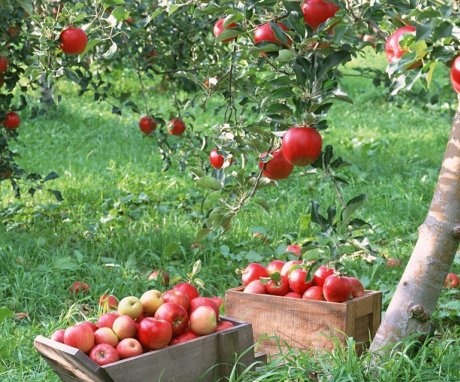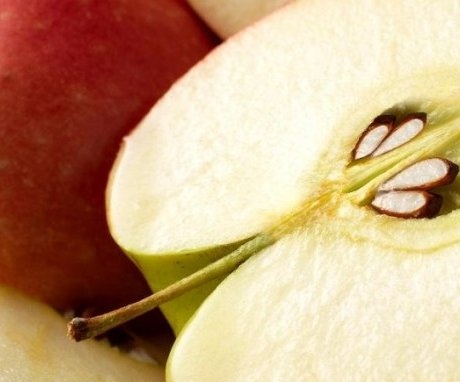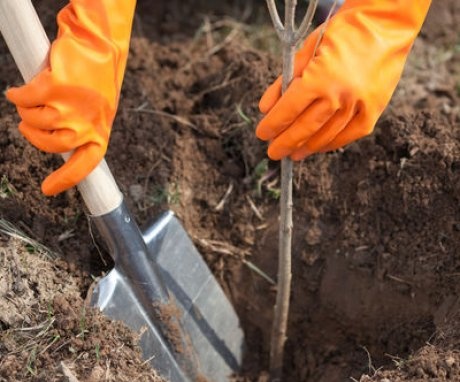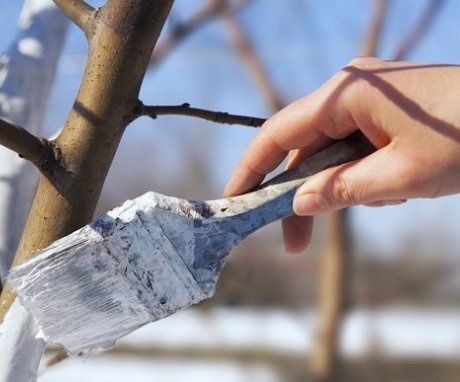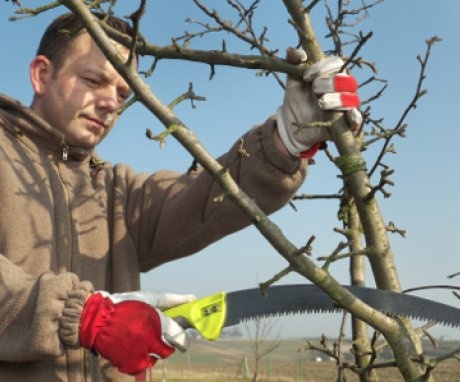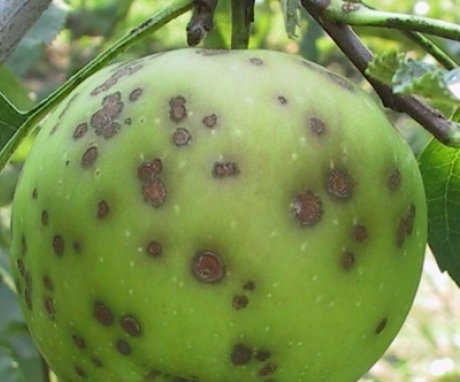Tips for gardeners: how to properly grow an apple tree in the garden
Without trees like apple trees not a single orchard is bypassed. After all, only they give that aroma to your site, which causes both a feeling of sadness and joy. To bring a tree from a seed planted in the ground to a real giant covered with fragrant apples is a huge work and pleasure.
Apple trees belong to the Pink family. This is especially felt when the tree is covered with a white-pink cloud of fragrant flowers, which then wonderfully turn into round fruits, sweet and sour in taste. The tree serves a person: it feeds him with apples, various products are made from its trunk. And in appearance, the tree has such decorative properties as a spreading crown with branches of various shapes.
Content:
- The best varieties of apple trees for the garden, their features
- Fruit tree propagation
- Preparing apple seedlings for planting
- Apple tree care recommendations
- Ways to form the crown of a tree, pruning
- Diseases and pests of the apple orchard, how to avoid them
The best varieties of apple trees for the garden, their features
By purchasing different varieties apple trees, we provide ourselves with delicious fruits from mid-summer to autumn. The early varieties of apple trees bear fruit first:
- White plum has ivory-colored fruits, which are harvested in early summer for three weeks. The older the tree is, the smaller the apples become. The variety is resistant to frost and disease.
- At Grushovka Moskovskaya, apples ripen in July. The fruits are covered with a thin green skin with pink stripes.
- For the Baltic variety Papirovka, early fruiting is characteristic, but apples, if not processed, quickly deteriorate.
Mid-ripening apple tree species are most often frost-resistant, but can be subject to various diseases:
- Tall trees with a ball-like crown give the greenish-yellow, slightly sour fruits of Antonovka.
- From Bessemyanka Michurinskaya you can get juicy greenish apples with a yellow tint, which ripen gradually, starting from August to September.
- The variety Baltika will bestow rosy, round, juicy fruits.
But late-ripening varieties of apple trees are most valuable, since they bear fruit late, their harvest lasts all winter:
- Winter-hardy Aport is often found in apple orchards. Its fruits are conical in shape, yellow with red barrels.
- Juicy apples of the Bezhin lug variety are distinguished by long storage.
For a garden to look complete, you must have all three varieties of apple trees in it. The choice of a variety, knowledge of the characteristics of growing and caring for it plays an important role in providing oneself with a harvest of fruits for a long period of time.
Fruit tree propagation
The apple tree is referred to as seed crops and propagated by seeds, cuttings, layering:
- Seed propagation requires special preparation, which begins in winter. The seeds planted in the ground, together with the container, are sent to the refrigerator for quenching. As soon as after 2 months, green shoots appear, they must be transplanted. For this, drawers are prepared with a drainage layer and loose, nutritious soil.Now the seedlings continue to live on the windowsills in more comfortable conditions, in warmth and sufficient lighting. Two more months will pass in this way. And now the seedlings are ready for independence, they are preparing a place in the garden. But there is no guarantee that the apple tree will be the same as the mother tree from which the seed was taken. May have to do vaccination.
- Preparation of cuttings begins in the spring, getting them from the root branches. The length of the material is about 20 centimeters. For some time, the cuttings are stored in a cool place, sprinkled with sand. Saplings are obtained from sturdy cuttings if they are taken from an unvaccinated tree. This material is also used for rootstocks, and for vaccinations.
- Having chosen reproduction by layering, side branches are pinned to the ground and sprinkled with soil. During the warm season, their spud, watered - and in the fall, apple tree seedlings are ready, which are carefully separated from the mother.
Each method of propagation of a fruit tree is costly in its own way, has its pros and cons, but it is possible to grow an apple tree by any means.
Preparing apple seedlings for planting
You should not rush to plant apple seedlings. The choice of a place in the garden is an important detail in replanting young trees. Sunny and open glades are suitable for fruit trees such as the apple tree. A pit for planting must be prepared in advance, a week in advance. If the soil is waterlogged with groundwater, then this is not suitable for the seedling. The height of the groundwater table should not reach one and a half meters.
The day before planting, the seedlings are soaked in water, cutting off the roots by a third, and then lowering the root part into a clay mash.
Some people use the use of additives - growth stimulants. Loamy soils are comfortable for apple trees. If the predominance of clay is great, then peat and coarse river sand can be added to the soil, and more clay, humus and compost.
Landing features:
- The volume of the hole depends on the varietal characteristics of the tree: the higher its trunk is, the wider the width of the planting groove.
- At the bottom of the ground with the addition organic and mineral fertilizers (wood ash, rotted manure, potassium sulfate, superphosphate) are loosened with a sharp shovel and drainage is thrown there, which can even be made from old tin cans.
- Having sprinkled the hole in a third with fertile soil, they drive in a peg in the middle, near which a seedling is placed, slightly raising it above the ground.
- Having straightened the roots of the plant, they slowly begin to pour in the earth and tamp it. The edges of the planting circle should be trampled down especially carefully after planting.
- Having tied a small apple tree to a peg with twine, water the seedling abundantly using at least 5 buckets of water.
- It is advisable to mulch the soil around the apple tree with a five centimeter layer of peat.
- A week later watering seedlings are repeated.
The best time for planting apple trees is the autumn period until mid-October, but it is not recommended to do this later than the twentieth, it is better to leave it until spring, until the end of April.
Apple tree care recommendations
The basic rules for caring for an apple tree include:
- Good watering especially during dry periods is a must for the fruit tree. The main irrigation schedule is three times - at the beginning of summer, during the filling period, before frost.
- Top dressing is used in spring and autumn. In April, fertilize with saltpeter in a tablespoon per square meter and ash up to two glasses. It is useful to shed the soil under the apple tree with a solution of boric acid and copper sulfate. In the autumn, superphosphates, compost, wood ash... Some experts recommend adding a little table salt, or sodium chloride. Close up of fertilizer in the soil around the circumference of the tree.
- The whitewashing of apple tree trunks in autumn is carried out so that the trees are protected from diseases by the honey preparations contained in the lime. In case of damage and wounds on the bark, these places can be covered with red lead or pitch.
Ways to form the crown of a tree, pruning
Removing some of the branches from the apple tree will help rejuvenate the tree and increase its yield. Pruning carried out in early spring, when all the snow has not yet melted. Old branches are completely removed, partially - those remaining with last year's flower buds. This procedure will help stimulate new flowers and form a full-bodied apple harvest.
The thickening of the crown is removed by removing thin twigs.
This helps to reduce the frequency of fruiting and relieves the tree from overloading with apples in fruitful years. By lightening the tree when pruning three-year-old shoots, you can improve its fruiting.
Thinning the crown of the tree, its lightening is carried out, while the growth shoots turn into fruiting ones, the premature aging of the fruit branches is suspended. Frequent pruning of weak growth will help to correct the appearance of the tree and its further life.
Diseases and pests of the apple orchard, how to avoid them
Many varieties of apple trees are susceptible to diseases:
- The formation of a powdery coating on the leaves, buds and shoots indicates infection with a fungal disease. This ailment is effectively treated by spraying with lime decoction with the addition of sulfur.
- The most common among apple trees is scab, which covers apples and leaves with brown spots. The cure comes with a ten percent ammonium nitrate, and the affected leaves are simply destroyed.
- Diseases caused by a fungus of various types affect apple trees quite often. This is fruit rot and rust and sooty fungus. The name of the ailments speaks for itself, you need to fight them by spraying fungicidal preparations, copper-soap solutions. Coniferous trees planted nearby will help to avoid infection with many diseases.
The main pests of the apple tree include the hawthorn, the caterpillar of which feeds on buds and leaves. At the end of summer, the caterpillar in the cocoon retains its life until the onset of autumn. By removing and burning old foliage, you can partially save the tree from the pest.
The apple moth is also dangerous, destroying fruits and leaving gardeners without a crop.
This pest does not like the smell of mothballs. Sacks with an odorous substance hung on the branches of a tree will scare away the moth. The caterpillars of leaf rollers destroy the foliage of the apple tree. The fight against parasites is carried out in advance before the period of movement of the juices. Biologicals such as Zircon are positive. Before starting treatment, it is necessary to check the reaction of the tree to the remedy.
Carried out in advance treatment apple trees with appropriate preparations will help to avoid the occurrence of the disease and save from pests.
More information can be found in the video:



